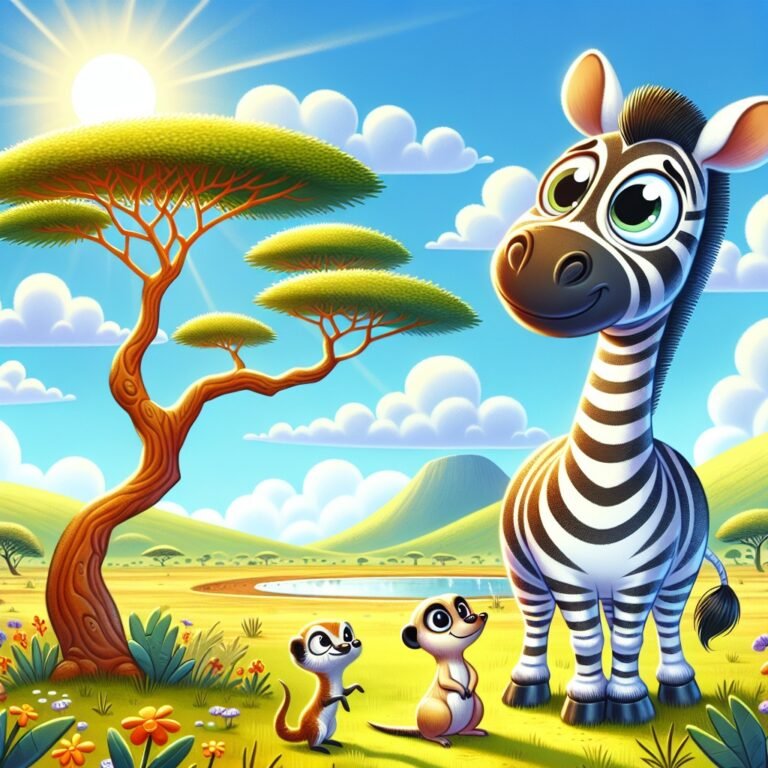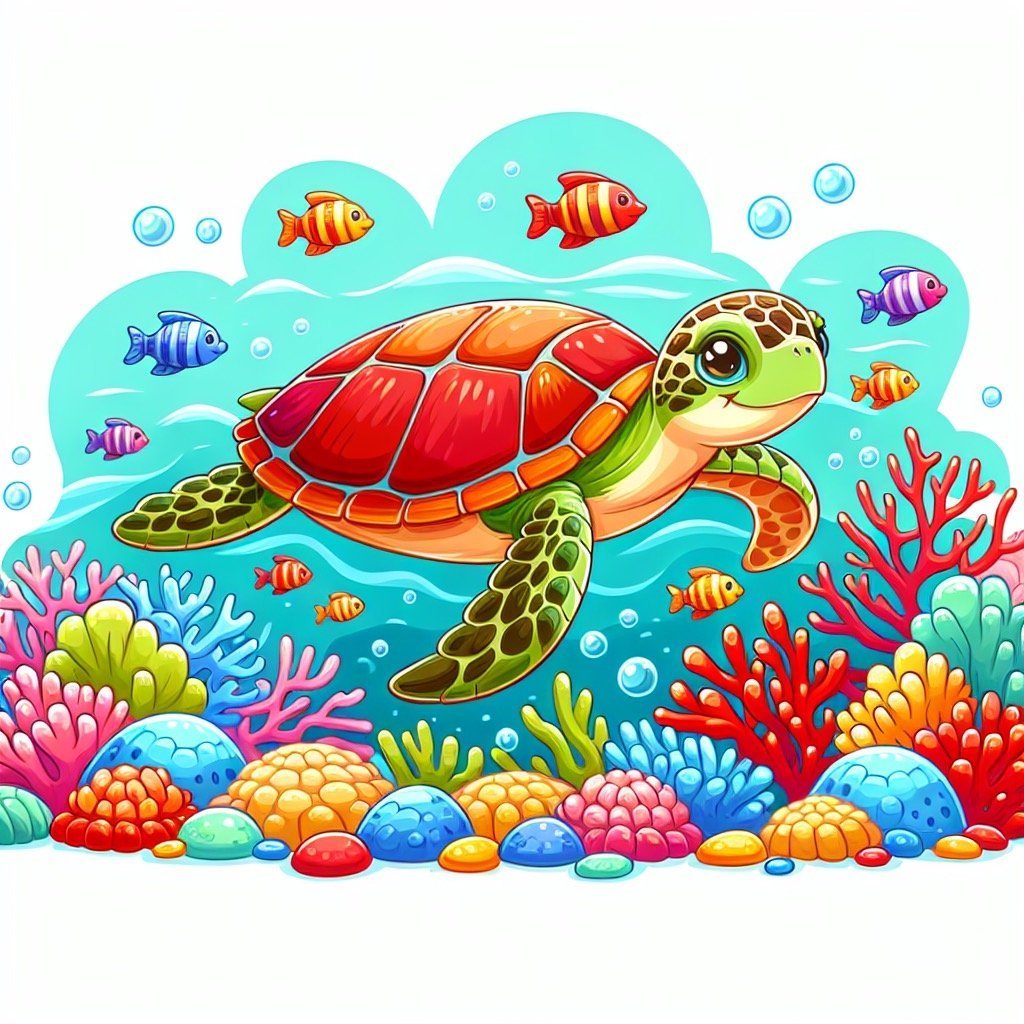Welcome to the world of Zebra Facts For Kids! Dive into the fascinating world of zebras and discover the incredible adaptations and behaviors that make these iconic African animals truly remarkable. From their unique black and white stripes that act as camouflage to their impressive ability to run at speeds of up to 65 kilometers per hour, zebras are full of surprises. Join us on a journey through fun facts about zebras, from their social dynamics and communication methods to their powerful defense mechanisms and excellent memories. Get ready to uncover the wonders of nature and gain a deeper appreciation for these beautiful creatures. Let’s explore the captivating world of zebras together!
Zebra Facts For Kids
1. A Zebra’s Stripes Act as Camouflage
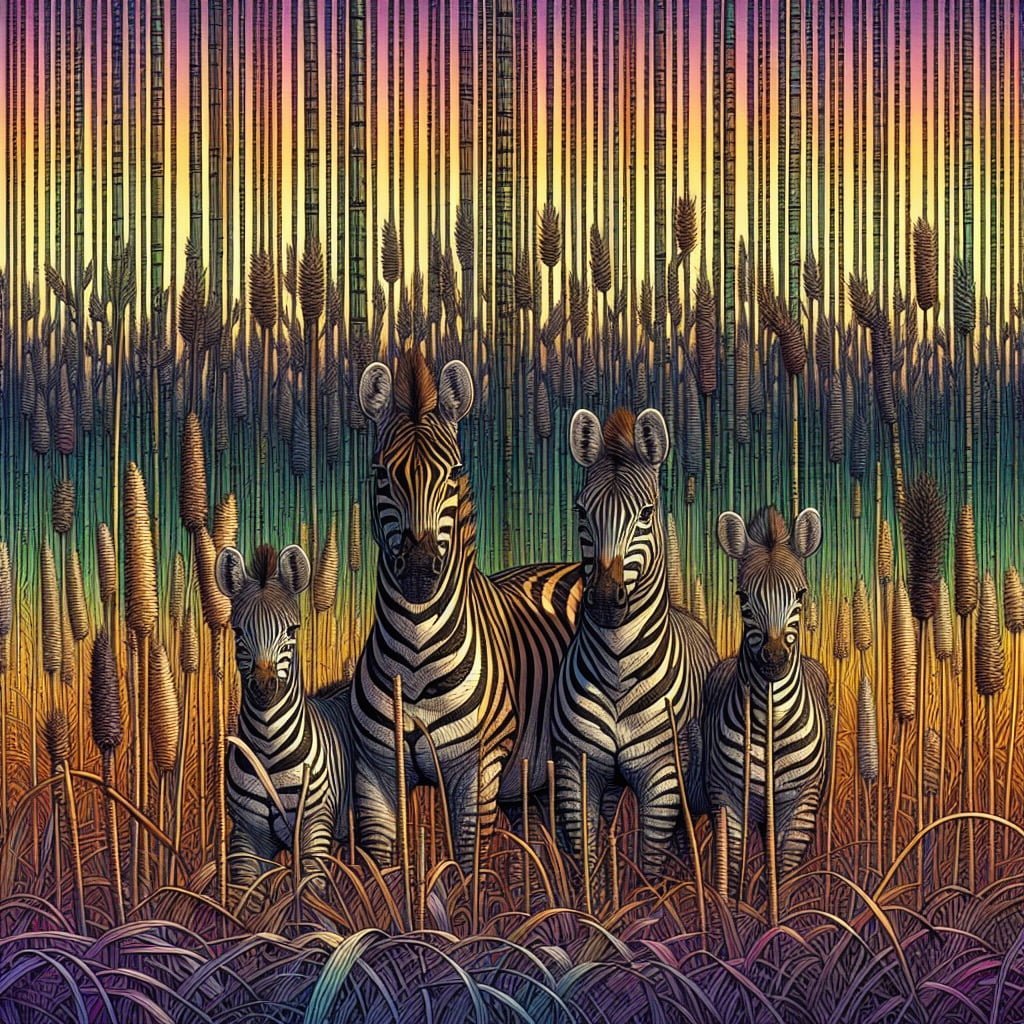
For younger kids: Zebras have stripes to help them hide from predators.
For older kids: The black and white stripes on a zebra’s body create an optical illusion that makes it difficult for predators, like lions and hyenas, to pick out individual zebras in a group.
Detailed explanation:Zebra Facts For Kids:
One of the most fascinating facts about zebras is that their black and white stripes actually act as a form of camouflage in their natural habitat. This may come as a surprise to many people, as the bold pattern of a zebra’s coat may seem more eye-catching than stealthy. However, when you consider the environment in which zebras live, their stripes make perfect sense.
Zebras are native to the grasslands and savannas of Africa, where the landscape is a mix of tall grass and shrubs. The alternating black and white stripes of a zebra’s coat create a disruptive pattern that helps them blend in with their surroundings. This is because the vertical stripes break up the zebra’s outline, making it harder for predators such as lions and hyenas to single them out from a distance. In fact, when a zebra stands with its herd, the stripes can create a confusing visual effect that makes it difficult for predators to focus on one individual zebra.
Additionally, the stripes serve as a form of social camouflage within the herd. Each zebra’s pattern is unique, much like a fingerprint, and helps members of the herd recognize each other. This is especially important for young zebras, who stay close to their mothers for protection. By learning to identify their mother’s unique stripe pattern, young zebras can easily find her in a crowded herd.
In conclusion, the black and white stripes of a zebra’s coat are not just a striking visual feature – they are a highly effective form of camouflage that helps these animals survive in the African wilderness.
Zebra Facts For Kids
2. Zebras Travel in Large Herds

For younger kids: Zebras like to stay together and travel in big groups.
For older kids: Zebras form large herds, not only for protection against predators but also because it provides opportunities for mating, socializing, and finding food and water.
Detailed explanation:Zebras are fascinating animals that are known for their unique black and white striped coats. One interesting fact about zebras is that they often travel in large herds. These herds can consist of up to thousands of individuals, making them one of the largest groups of animals in the wild. This behavior serves several important purposes for the zebras.
One reason why zebras travel in large herds is for protection against predators. By sticking together in large numbers, zebras are able to watch out for each other and alert the group to any potential threats. This safety in numbers strategy helps to reduce the risk of individual zebras being targeted by predators such as lions or hyenas.
Another benefit of traveling in large herds is that it allows zebras to find food more easily. Zebras are herbivores, and they rely on grazing on grass and other vegetation to survive. By moving in a group, zebras are able to cover a larger area and find more food sources. This can be especially important during times of drought or when food is scarce.
In addition to protection and finding food, traveling in large herds also serves a social function for zebras. These animals are highly social and form strong bonds within their herds. By traveling together, zebras are able to communicate, establish dominance hierarchies, and engage in social behaviors such as grooming and playing.
In conclusion, the fact that zebras travel in large herds is an important aspect of their behavior that helps them to survive in the wild. By sticking together, these animals are able to protect themselves from predators, find food more easily, and engage in important social interactions.
Zebra Facts For Kids
3. A Zebra’s Kick Can Be Deadly

For younger kids: Zebras can kick really hard to protect themselves.
For older kids: Zebras have a powerful kick that can easily injure or even kill a predator, and they use this defense mechanism when they feel threatened.
Detailed explanation:One of the lesser-known Zebra Facts for Kids is that a zebra’s kick can be deadly. Zebras are powerful and agile animals, known for their unique black and white striped coats. While they may seem docile and peaceful, zebras are actually quite defensive creatures and will not hesitate to defend themselves if they feel threatened.
Zebras have strong hind legs that they use to kick predators or other threats. These kicks can be incredibly powerful, delivering a force that is strong enough to break bones or cause serious injury. In fact, a zebra’s kick has been known to kill predators such as lions or hyenas in self-defense.
It’s important for kids to understand the importance of respecting wild animals like zebras and giving them space in their natural habitats. While zebras may seem cute and cuddly, they are still wild animals with sharp instincts for survival. Encouraging kids to appreciate zebras from a safe distance and to learn more about their behaviors and habitats can help foster a greater appreciation for these magnificent creatures.
In conclusion, while zebras may be known for their striking appearance and social behaviors, it’s important for kids to also be aware of their defensive capabilities, such as their deadly kicks. By learning more about the natural world and the animals that inhabit it, kids can develop a greater understanding and respect for the diverse and fascinating creatures that share our planet.
Zebra Facts For Kids
4. Zebras Can Run up to 65 km/h
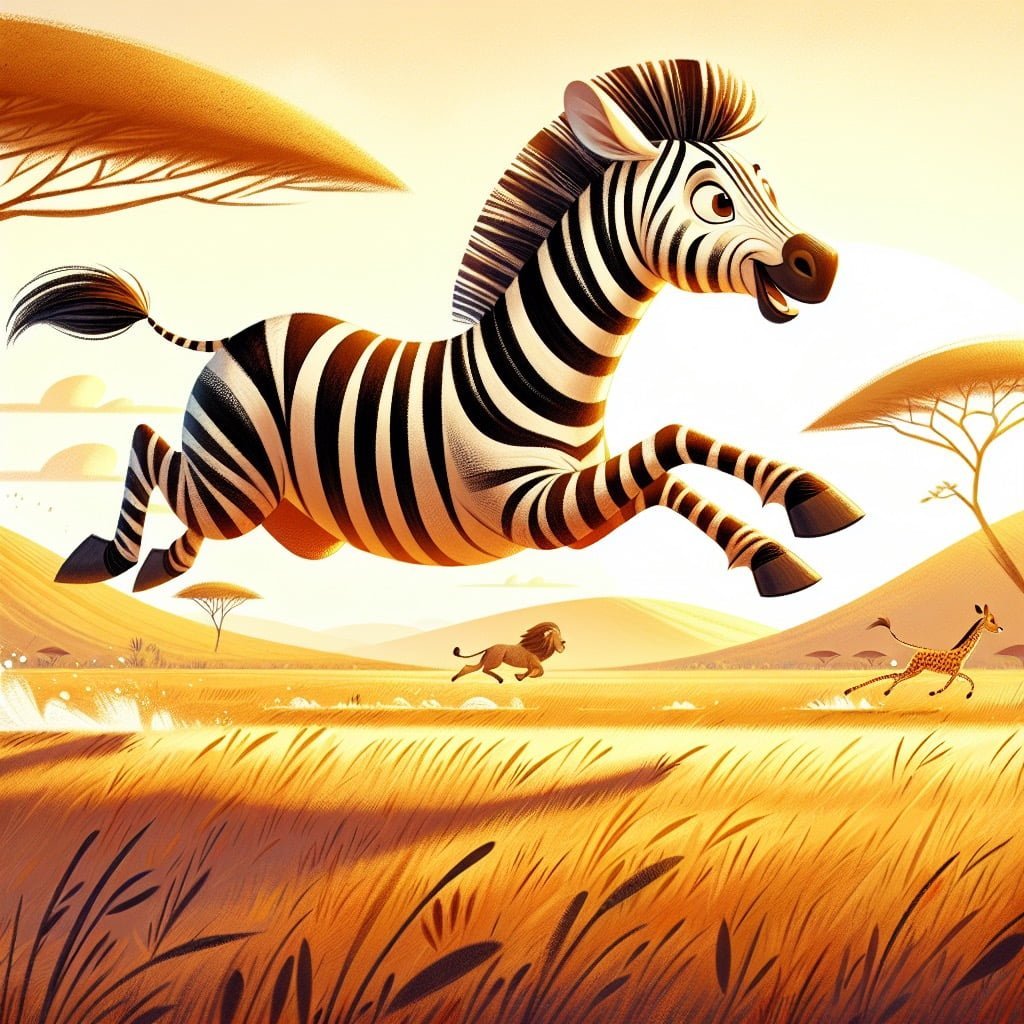
For younger kids: Zebras are super fast runners and can outrun many animals.
For older kids: Despite their seemingly clumsy appearance, zebras can reach speeds of up to 65 kilometers per hour when they need to escape from predators.
Detailed explanation:One of the most fascinating zebra facts for kids is that these beautiful animals are incredibly fast runners. With the ability to sprint at speeds of up to 65 km/h, zebras are well-equipped to escape predators in the wild. This impressive speed is a crucial survival mechanism for zebras, as they are often preyed upon by animals such as lions and hyenas.
Zebras have evolved to have powerful leg muscles that allow them to reach such high speeds. Their long legs and svelte bodies are perfectly adapted for running quickly across the African savannah. In addition to their physical adaptations, zebras also have a keen sense of awareness that helps them detect predators early on, giving them a head start when it comes to fleeing.
When a zebra is in danger, it will often join forces with other members of its herd to increase its chances of survival. Zebras are social animals that rely on the strength of their group to outmaneuver predators. By forming a united front and running in a coordinated manner, zebras can confuse and outrun predators that may be chasing them.
In conclusion, the fact that zebras can run up to 65 km/h is a truly remarkable aspect of their biology. This impressive speed, combined with their social behavior and awareness of their surroundings, makes zebras well-equipped to thrive in the African wilderness. Kids who are interested in learning about animals will undoubtedly find this zebra fact both fascinating and educational.
Zebra Facts For Kids
5. Each Zebra Has Unique Stripes
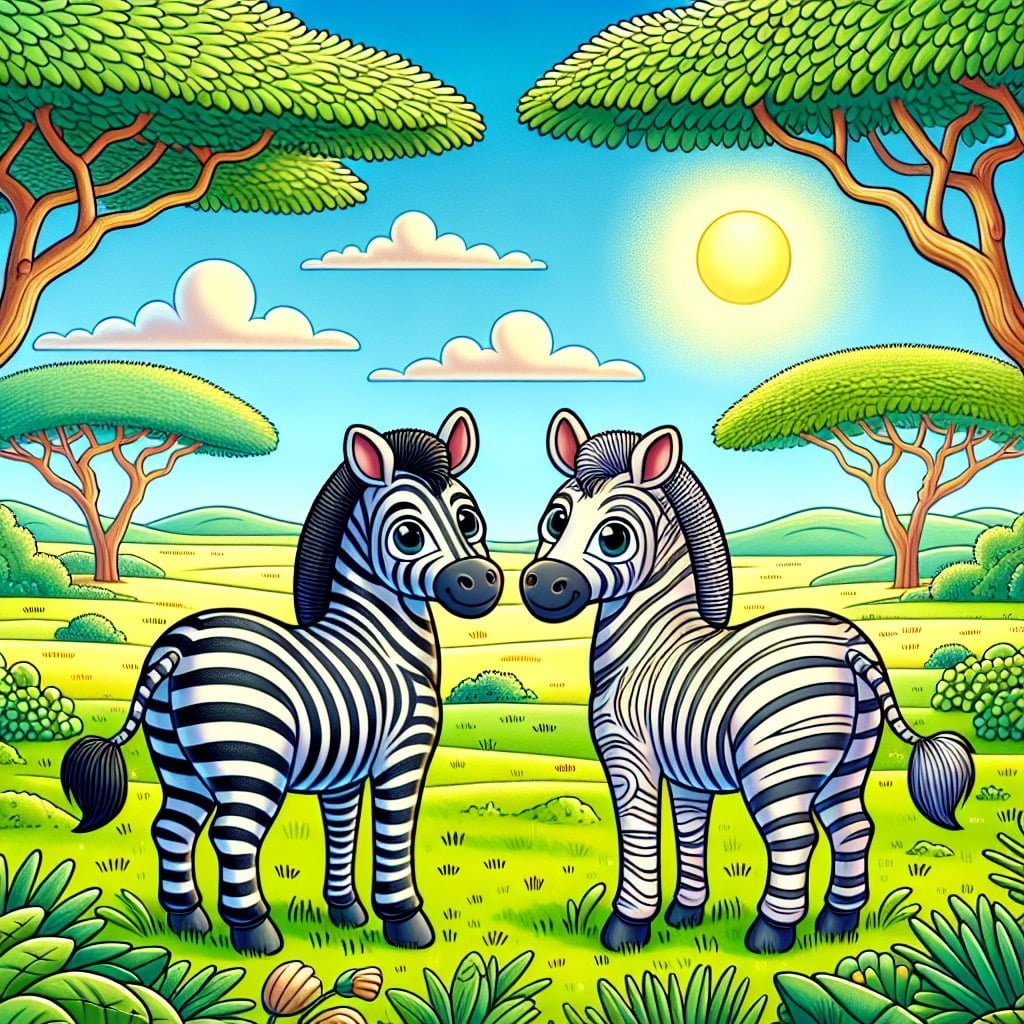
For younger kids: A zebra’s stripes are like fingerprints – no two are exactly the same!
For older kids: Just like human fingerprints, no two zebras have the exact same stripe pattern, making each zebra’s stripes as unique as a human’s fingerprint.
Detailed explanation:Zebra Facts For Kids are always fascinating, and one of the most interesting facts about these animals is that each zebra has unique stripes. While it may be tempting to think that all zebras look the same, upon closer inspection, it becomes evident that their stripes are as distinct as human fingerprints.
Zebra stripes are not only for aesthetic purposes, but they also serve important functions in the wild. The stripes act as a form of camouflage, making it difficult for predators to single out an individual zebra from the herd. Additionally, the unique stripe patterns help zebras recognize each other, strengthen social bonds within the herd, and facilitate group cohesion.
Scientists are still studying the exact mechanisms that determine the formation of zebra stripes. It is believed that genetics play a significant role in determining the pattern of stripes, as the stripes are already present in the zebra’s skin. Factors such as nutrition, temperature, and environmental stress may also influence the thickness, darkness, and alignment of the stripes.
Furthermore, the color and pattern of zebra stripes can vary among different species of zebras. For example, the Grevy’s zebra has narrower stripes compared to the plains zebra. This variation in stripe patterns adds to the uniqueness of each zebra and makes them truly one-of-a-kind.
In conclusion, the fact that each zebra has unique stripes adds to the wonder and beauty of these magnificent creatures. It serves as a reminder of the complexity and diversity of the animal kingdom, and highlights the importance of appreciating and protecting these incredible animals. Zebra Facts For Kids sure are full of interesting and amazing information!
Zebra Facts For Kids
6. Zebras Sleep Standing Up

For younger kids: Zebras can sleep while they stand on their four legs!
For older kids: Due to the constant threat of predators, zebras have the ability to sleep while standing, using a special mechanism in their legs that allows them to rest without lying down.
Detailed explanation:Zebras are fascinating creatures with many intriguing behaviors, one of which is their ability to sleep standing up. This unique trait is an adaptation that helps them stay safe from predators in the wild.
Zebras are prey animals, meaning they are constantly on the lookout for potential threats. Sleeping while standing allows them to quickly escape if a predator approaches, as they are already in a position to run away. In addition, the act of standing up allows zebras to rest their muscles without fully relaxing, which helps them remain alert to any potential danger.
Despite sleeping standing up, zebras do still need to lie down for deep REM sleep. To accomplish this, they will often take short naps while standing throughout the day, and then find a safe spot to lie down for longer periods of rest. This behavior ensures that they get the necessary amount of sleep while minimizing their vulnerability to predators.
Teaching children about zebra facts for kids can be a fun way to introduce them to the animal kingdom and the diverse behaviors of different species. By learning about how zebras sleep standing up, children can develop an appreciation for the unique ways in which animals have adapted to survive in their environments. Next time you see a zebra at the zoo, take a moment to observe its behavior and marvel at the amazing ways in which nature has evolved.
Zebra Facts For Kids
7. Zebras Communicate with Different Sounds

For younger kids: Zebras talk to each other in their own special way with different sounds.
For older kids: Zebras use a variety of vocalizations, such as barking, whistling, and braying, to communicate different messages within their social groups.
Detailed explanation:Zebras are fascinating animals that are known for their unique black and white striped coats. However, one lesser-known fact about zebras is that they communicate with different sounds. These sounds play an important role in their social interactions and survival in the wild.
Zebras use a variety of vocalizations to communicate with one another. For example, they may whinny, bray, snort, or bark to convey different messages to the members of their herd. These vocalizations can indicate danger, alert others to food sources, or establish dominance within the group. By using different sounds, zebras are able to effectively communicate with each other and navigate their complex social structures.
For kids who are interested in learning more about zebras, understanding their vocalizations can provide valuable insight into the behavior of these fascinating animals. By listening carefully to the different sounds that zebras make, kids can start to interpret the messages being conveyed and gain a deeper appreciation for the complexity of zebra communication.
In addition to vocalizations, zebras also communicate through body language and scent marking. By combining these different forms of communication, zebras are able to effectively navigate their environments and ensure the safety and well-being of the herd.
In conclusion, zebras are not only known for their iconic striped coats, but also for their diverse range of sounds used for communication. By delving into the world of zebra vocalizations, kids can gain a greater understanding and appreciation for these majestic animals.
Zebra Facts For Kids
8. Zebras Have Excellent Memories
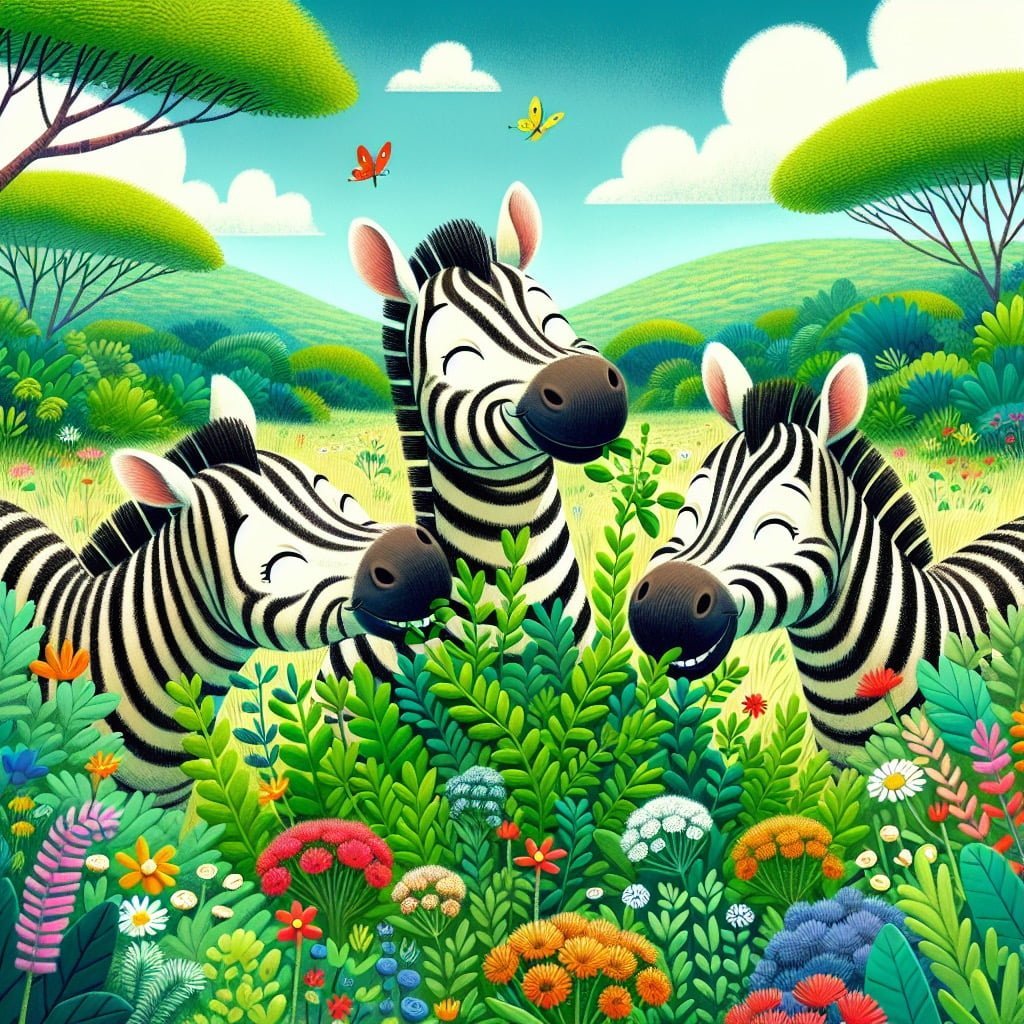
For younger kids: Zebras can remember where the best grazing spots are!
For older kids: Zebras have remarkable memories, allowing them to remember migration routes, water sources, and the locations of abundant food even after a long time has passed.
Detailed explanation:Zebras are fascinating creatures that are known for their unique black and white stripes, but did you know that they also have excellent memories? This ability to remember information is crucial for their survival in the wild.
One reason why zebras have such great memories is because they live in groups called herds. These herds can consist of dozens of zebras, and each individual zebra must be able to recognize and remember the other members of their group. This helps them stay together and protect each other from predators.
Additionally, zebras need to remember where the best grazing spots are located. By remembering the locations of water sources and the tastiest grasses, zebras can ensure that they stay well-fed and hydrated. This is especially important during times of drought when resources are scarce.
Another reason why zebras have excellent memories is for social reasons. Zebras have complex social structures and hierarchies within their herds. By remembering the social status of other zebras, they can navigate these relationships more effectively and avoid conflicts.
In conclusion, zebra facts for kids include the interesting fact that zebras have excellent memories. This ability to remember other members of their herd, locations of resources, and social hierarchies is essential for their survival in the wild. Next time you see a zebra, remember that they are not only beautiful animals, but also incredibly intelligent.
Zebra Facts For Kids
9. Zebras Can Live up to 25 Years
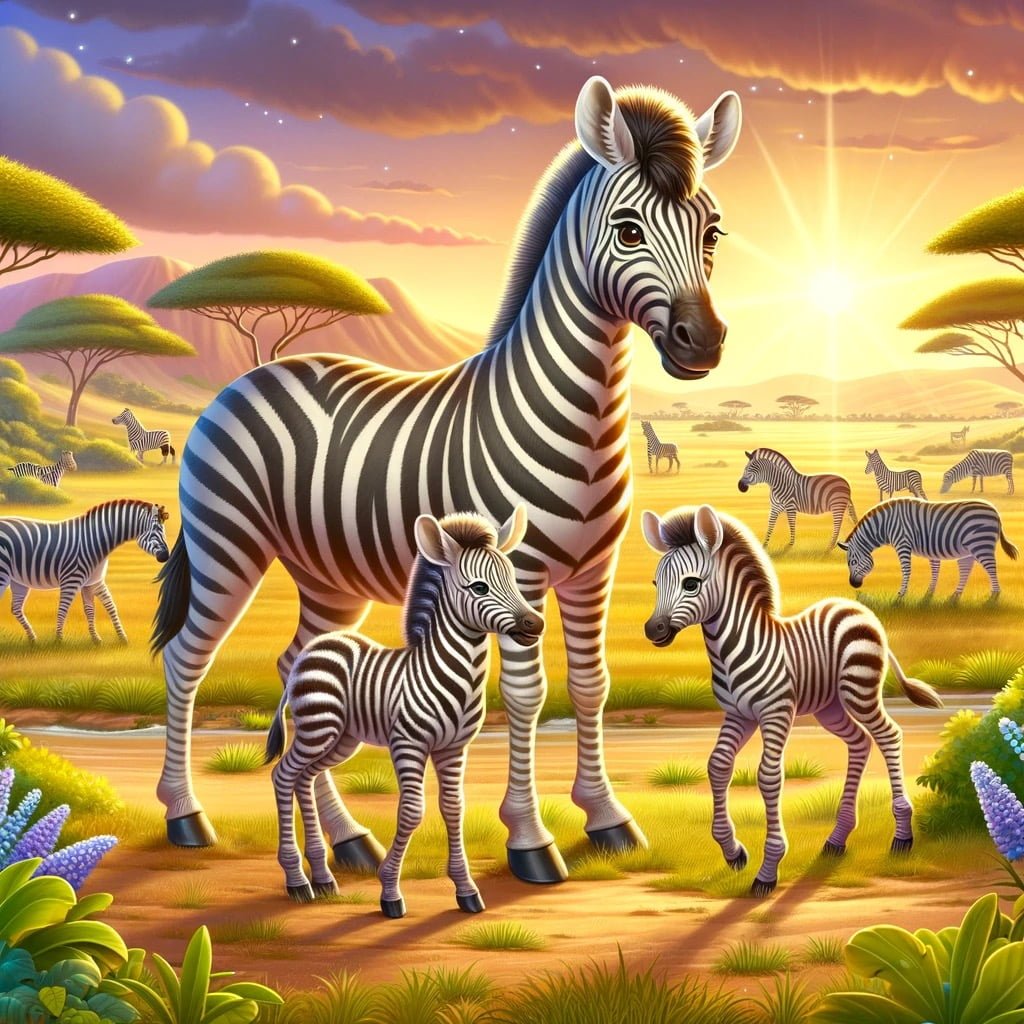
For younger kids: Some zebras can live for a really long time, just like grandparents!
For older kids: With proper conditions and protection from predators, zebras can live up to 25 years in the wild, and even longer in captivity.
Detailed explanation:Zebras are fascinating creatures that are known for their distinctive black and white stripes. One interesting Zebra Facts For Kids is that they can live up to 25 years in the wild. This may come as a surprise to some people, as zebras are often preyed upon by predators such as lions and hyenas. However, zebras have evolved over time to develop certain survival mechanisms that allow them to live relatively long lives in their natural habitats.
One of the reasons why zebras can live for up to 25 years is their strong herding behavior. Zebras are social animals that live in groups known as “harems,” which consist of a dominant male, several females, and their offspring. By sticking together in groups, zebras are able to defend themselves against predators more effectively. In addition, the constant presence of other zebras provides a sense of security and companionship, which can contribute to their overall well-being and longevity.
Another factor that contributes to the long lifespan of zebras is their ability to adapt to a variety of environments. Zebras are herbivores that graze on grasses and other vegetation, and they are able to thrive in a wide range of habitats, from savannas to woodlands. This adaptability allows zebras to find food and water even in challenging conditions, which can help them survive and thrive for many years.
Overall, the fact that zebras can live up to 25 years is a testament to their resilience, social behavior, and adaptability. By understanding these aspects of zebra biology and behavior, we can gain a greater appreciation for these iconic African animals.
Zebra Facts For Kids
10. Zebras Are Close Relatives to Horses
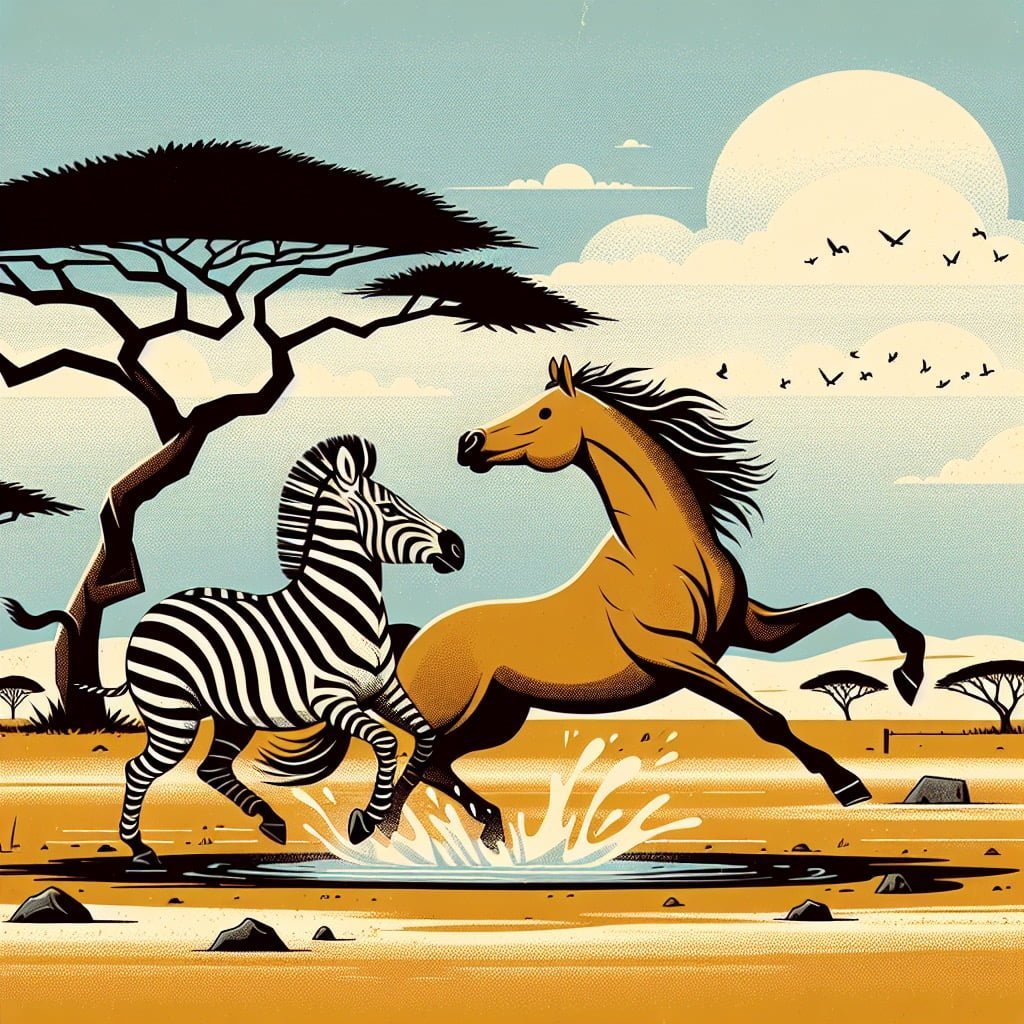
For younger kids: Zebras and horses are related and have some things in common!
For older kids: Zebras belong to the same family as horses and donkeys, and they share many physical and behavioral traits with them due to their common ancestry.
Detailed explanation:Zebras are fascinating animals that belong to the Equidae family, along with horses and donkeys. In fact, zebras are very close relatives to horses, sharing a common ancestor. Despite their similar appearances, there are some key differences between zebras and horses that set them apart.
One of the most distinctive features of zebras is their iconic black and white stripes. These stripes are unique to each zebra, much like a fingerprint is unique to each human. Scientists have theorized that zebras developed stripes as a form of camouflage, making it difficult for predators to single out an individual zebra in a herd. Horses, on the other hand, do not have these striking stripes and rely on different strategies for survival.
Another interesting difference between zebras and horses is their behavior. Zebras are known for their social nature, living in groups called harems that are led by a dominant male. In contrast, horses typically live in smaller groups or even alone in the wild. This difference in social structure has evolved as a way for zebras to protect themselves from predators and ensure the survival of their species.
Overall, zebras and horses share a common ancestry and are closely related in the animal kingdom. By studying these fascinating creatures, we can gain a better understanding of the evolution and diversity of life on Earth. These zebra facts for kids can help educate young minds about the natural world and the interconnectedness of all living things.
Did You Know?
Zebras are social animals that rely on their strong group dynamics for protection and survival, forming close-knit bonds with each other to navigate their challenging environment.
Summary of Zebra Facts For Kids
Zebras are not just black and white striped horses. These fascinating creatures possess a multitude of unique behaviors and adaptations that make them truly remarkable animals. From their intricate social structure to their diverse methods of communication, there is so much to learn about zebras. By exploring the world of zebras, children can embark on an exciting journey filled with wonder and discovery. Understanding how zebras interact with one another and their environment can not only expand their knowledge but also foster a greater appreciation for wildlife conservation efforts. So, grab a book or hop online to delve into fun and educational zebra facts that will ignite curiosity and inspire a love for these captivating creatures.
Sources and additional information for Zebra Facts For Kids
WikipediaBritannicaSan Diego Zoo KidsThe Smithsonian InstitutionDK Find Out!Australian MuseumWorld Wildlife FundThe Nature ConservancyAnimal PlanetMonterey Bay AquariumPBS NatureSmithsonian’s National Zoo & Conservation Biology InstituteWorld Wildlife FundAnimal Diversity Web (University of Michigan)IUCN Red List of Threatened SpeciesThe Cornell Lab of Ornithology – All About BirdsNational Audubon SocietyEncyclopedia of LifeSeaWorld Parks & EntertainmentAustralian Museum – AnimalsEncyclopedia of Life
